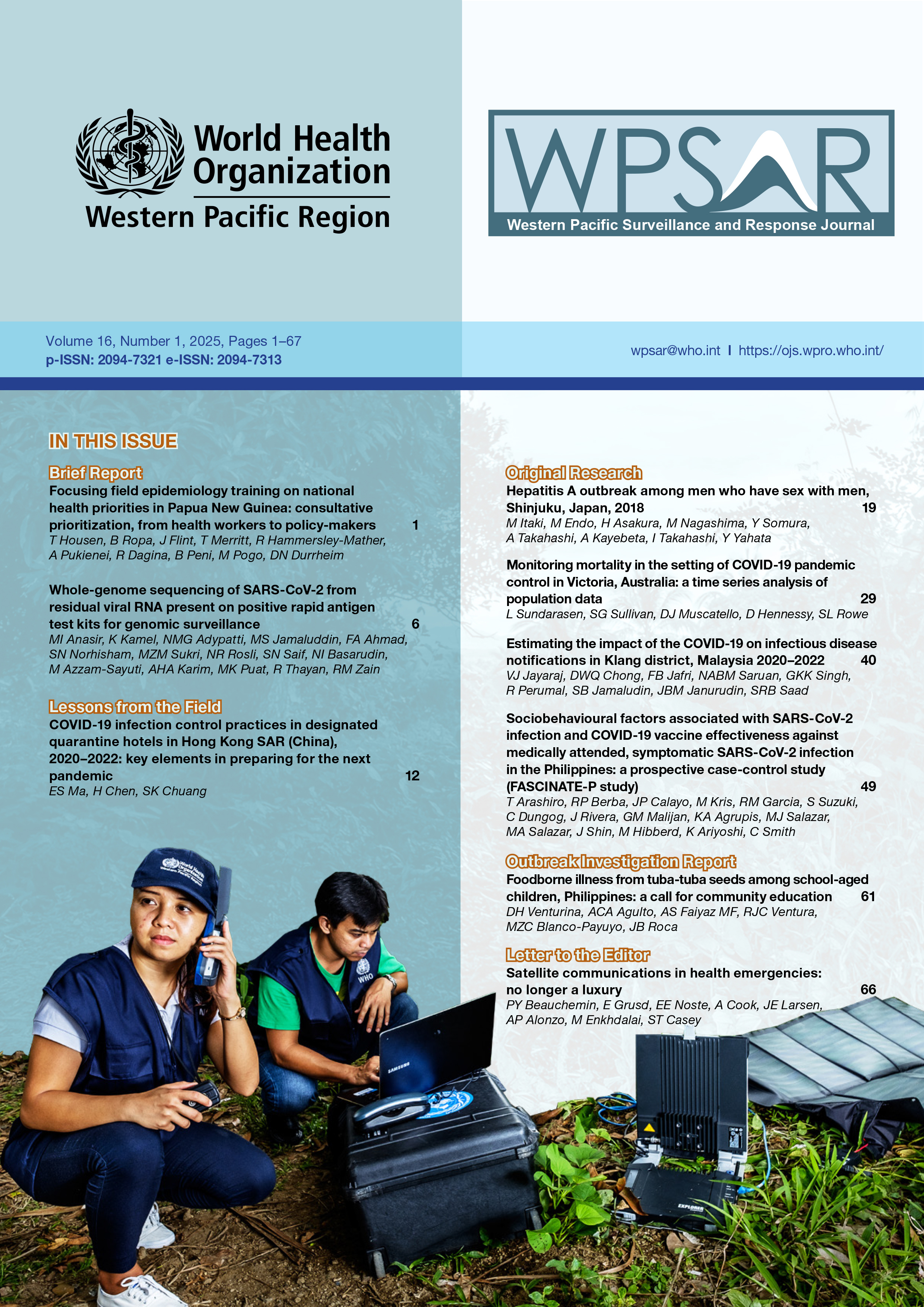Estimating the impact of the COVID-19 pandemic on infectious disease notifications in Klang district, Malaysia, 2020–2022
DOI:
https://doi.org/10.5365/wpsar.2025.16.1.1097Keywords:
SARS-CoV-2, disease notification, public health surveillance, non-pharmaceutical interventions, infectious disease transmissionAbstract
Objective: The COVID-19 pandemic disrupted disease surveillance systems globally, leading to reduced notifications of other infectious diseases. This study aims to estimate the impact of the COVID-19 pandemic on the infectious disease surveillance system in Klang district, Selangor state, Malaysia.
Methods: Data on notifiable diseases from 2014 to 2022 were sourced from the Klang District Health Office. The 11 diseases with more than 100 notifications each were included in the study. For these 11 diseases, a negative binomial regression model was used to explore the effect of the pandemic on case notifications and registrations by year, and a quasi-Poisson regression model was used to explore the changes by week.
Results: The results showed a reduction in the number of notifications and registrations for all 11 diseases combined during the pandemic compared with previous years. Changes between expected and observed notifications by week were heterogeneous across the diseases.
Discussion: These findings suggest that restrictive public health and social measures in Klang district may have impacted the transmission of other infectious diseases during the COVID-19 pandemic. The differential impact of the pandemic on disease notifications and reporting highlights the large ancillary effects of restrictive public health and social measures and the importance of building resilience into infectious disease surveillance systems.

